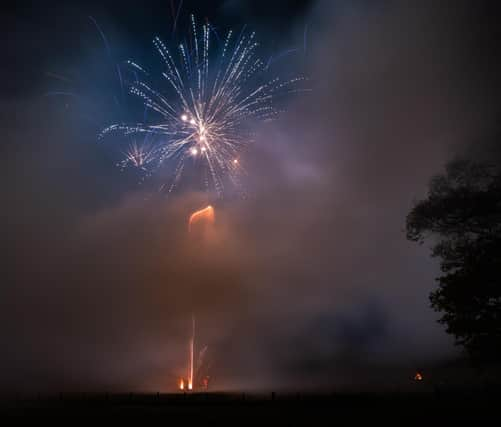CAMERA CLUB: Putting fireworks in the frame


I enjoy night-time photography anyway and setting the exposure correctly to capture the movement of the fireworks’ explosions and the trailing sparks without over-exposing them is a pleasing technical challenge.
Most hobbyist cameras have dedicated fireworks modes. Select that and see what exposure settings your camera’s manufacturer recommends. That mode makes a good starting point for adjusting your exposure manually. If your camera doesn’t have a fireworks mode, then try a 4-second shutter value and under expose by about 1 stop. Start from ISO 200 at f/4 or ISO 100 at f/2.8 and adjust from there. Estimate the focussing distance so you get the explosions sharp; you may need to manually focus, so try focussing on the launching point. That and a short focal length should achieve enough depth of field for sharp images.
Advertisement
Hide AdAdvertisement
Hide AdNext, think about adding some foreground interest to the photo. That can make the shot far more interesting than just capturing the firework exploding in the sky. However, it brings an additional challenge of exposing and focussing for both the foreground and the firework, especially if the foreground is dark. To get both in focus, reduce your aperture and increase the ISO. Also, bracketing multiple images at different exposures and focussing distances and then combining them in post processing can work. Additionally, your camera might have special features like Live Composite Mode, which can help you capture great photos. Photography apps can help too.
Although I photograph them, I do have mixed feeling about fireworks. Pets plus both farm and wild animals are upset by the explosions. Furthermore, this night isn’t a cause for celebration for everyone. A friend who worked as a nurse in A&E saw more than his fair share of burns from fireworks. Consequently, he loathed this night. I also once saw Guy Fawkes Night start an ugly sectarian argument. Is photographing something that isn’t acceptable to some people something to avoid? Capturing a subject can be misconstrued as celebrating it, especially when shooting something contentious. A few years ago, someone complained to me about a video of a fox hunt on a news website. Strongly opposed hunting, they considered the video a celebration of the hunt. Yet, it was nothing more than a news report with no opinion given either way. Similarly, a friend photographed street art through the window of a train. When he posted it, he was met with a tirade from a railway worker who said he was encouraging both dangerous trespassing and vandalism. Later, a street photographer friend received politically motivated derogatory comments for photographing environmental protesters.
Photographers’ beliefs are not necessarily aligned with the subjects they photograph. Throwing abuse at photographers has become more common in the last few years with the resurgence of extreme popularist politics. Of course, this issue lies with the viewer and not the photographer. But what should we photographers do? Do we just shoot wishy-washy photos with no meaning? Or should we be prepared to challenge, shock or offend.
It’s easy to like a photo of a dolphin leaping from the sea, or the sun rising above Bamburgh Castle, or the waves crashing onto the lighthouse in Amble. However, I particularly enjoy more challenging art. Seeing images that confront my beliefs or elicit strong emotional responses takes photography to a new level. Maybe we should be pleased when our photos prompt negative comments because that means we made someone think.
Light the blue touchpaper and retire!